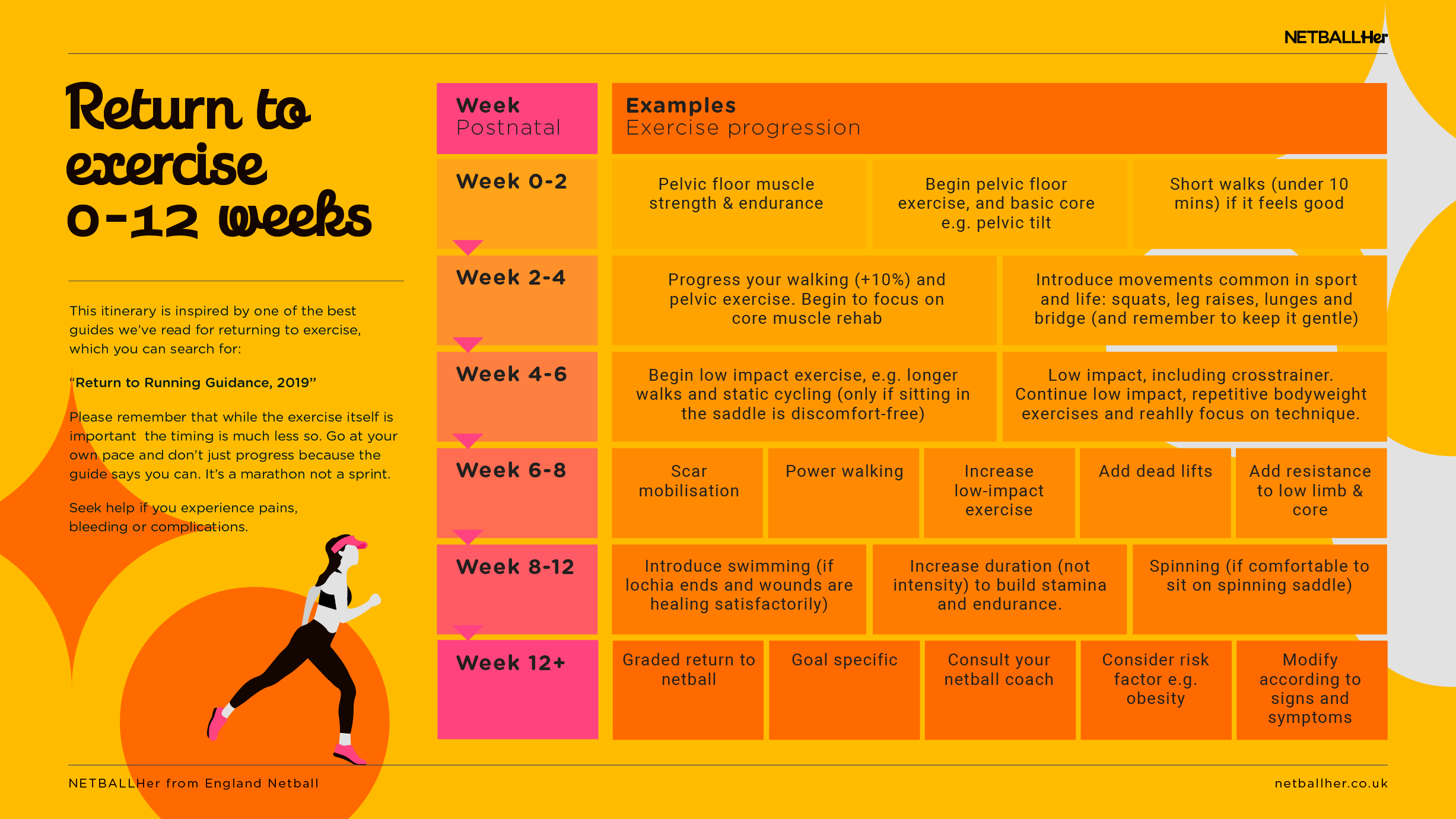Click play for an audio readthrough of this article
Blow by blow this is pelvic floor and basic core to cardio and resistance …
This itinerary is inspired by one of the best guides we’ve read for returning to exercise, which you can brush up a little more on here , and read in full here.
This is a blow by blow guide to returning to exercise after the birth of your little one, and please do remember that what’s most important here is you. The exercise itself is important but the timing is much less so. Go at your own pace and don’t just progress because the guide says you can. Really appraise where you’re at – it’s a marathon not a sprint.
Shall we?
Weeks 0 – 2
Focus on rest, healing and organisation. Start putting things in place so you can optimise your recovery. In a growing and busy household, staying on top can be a challenge.
If you want to start the road back to exercise (you may not and that’s fine), begin with pelvic floor and basic core exercises such as the pelvic tilt. If you’re up to it, try gentle short walks too.
For support in pelvic floor exercises, we’ve got you covered, while the NHS Squeezy app is another great resource.
Weeks 2 – 4
It’s time to start (if you haven’t already) progressing your pelvic floor and core rehab exercises, and to try some short walks. Try to increase your walking time by a small amount each week: 10% is fine.
Begin to build in functional movements (that you’ll need in sport and in life) such as squats, lunges and bridges, and focus on technique and breathing as you do.
If you’re able to hit all tasks at a given stage without experiencing any new symptoms then you can progress to the next stage.
Weeks 4 – 6
If you’re still feeling okay, progress to other low-impact exercises like the cross trainer, or on the static bike – but only if sitting is discomfort-free.
Begin with 5-10 minutes of slow and steady exercise, or go for all 10 minutes, alternating 30 seconds of steady and 30 seconds of rest.
Also, do some low impact, repetitive bodyweight exercises with great technique to build in strength and endurance.
Weeks 6 – 8
Feeling good? Then it’s time to introduce power walking and increase your volume of low-impact exercise. To progress your low-impact exercise, it’s suggested that you increase distance and not intensity … for now.
An increase of 10% session-to-session is typically recommended so if you cycle 2000-metres this time, aim for 2200-metres the next. Walk for 20-minutes this time and go for 22-minutes next.
If you’re doing interval work on the cross trainer then start to shift your timings. If you began at 30-seconds steady / 30-seconds rest then progress to 35-seconds steady / 25-seconds rest.
Here you can also start to add resistance (resistance bands are ideal) to lower limb and core exercises, and you can add exercises such as deadlifts.
Consider also adding single-leg exercises, such as a single-leg sit-to-stand, mountain climbers (to a table or sofa), step-ups, and single-leg calf-raises.
Weeks 8 – 12
If the wound has healed and vaginal discharge – known as lochia – has stopped then you can return to swimming but, again, slow and steady wins the race: a 10-15-minute swim is enough to begin with.
Meanwhile, you can continue to progress in your low-impact exercise and strengthening of your core, pelvic floor, and other main muscles. You’ll need those to move every day … and for your return to sport.
And remember …
It’s key to know that if you show any symptoms then go back a level and continue there until the symptoms resolve.
Consider changing your exercises by modifying the frequency (number of times per week) the intensity (how hard you go at it), the time (spent doing it) and the type of activity you do.
Oh and most important – seek advice for any complications or pain.
Only once your symptoms resolve do we recommend progressing to the next stage.
As a reminder, the content of the course belongs to The Well HQ. You have permission to access and use the content yourself or, if you are an organisation, for the number of users selected, but are not otherwise permitted to share such content with others, all in accordance with our Course Terms and Conditions.

